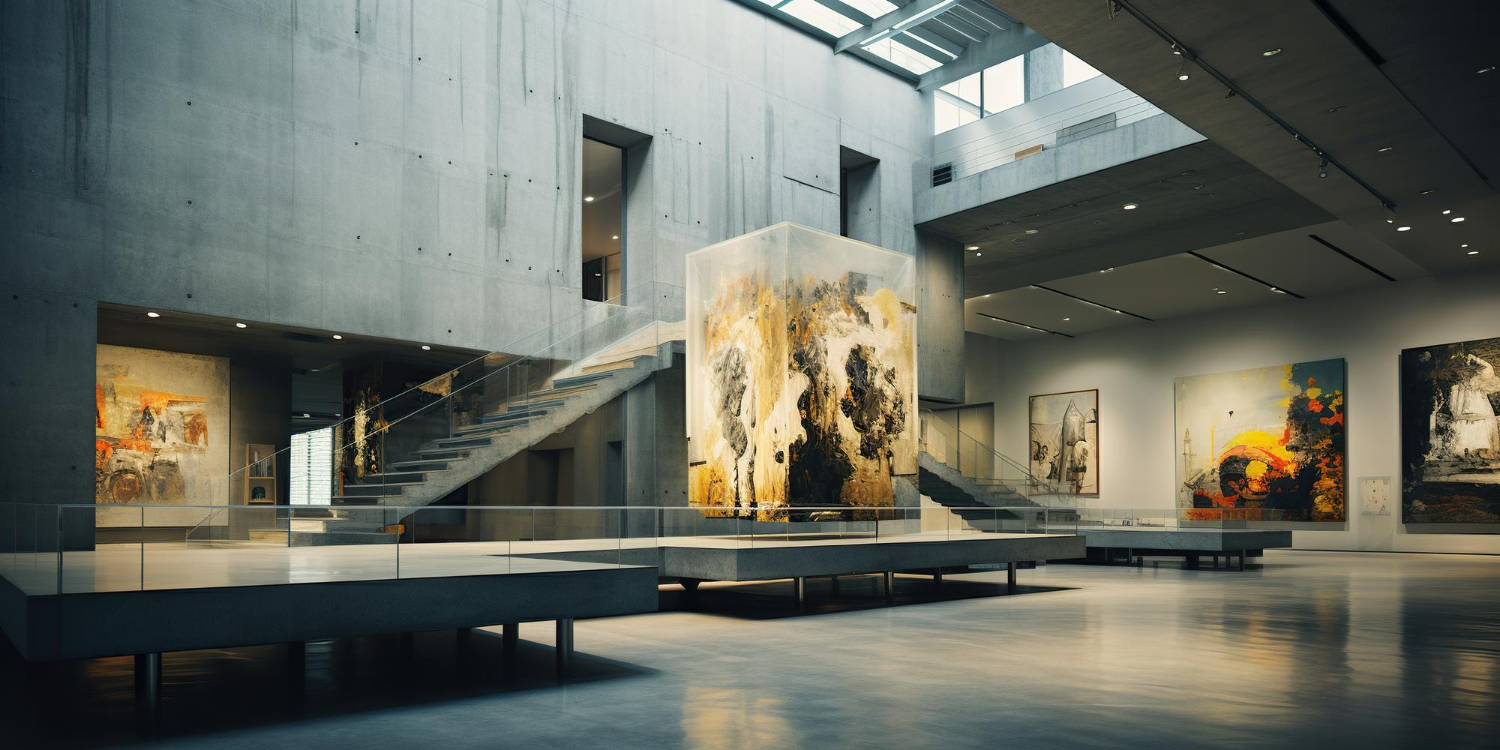งานศิลปะนั้นอยู่กับมนุษย์เรามานาน ตั้งแต่สมัยก่อนประวัติศาสตร์ก็มีความพยายามในการสร้างสรรค์รูปภาพต่างๆ เพื่อสื่อความหมายผ่านผนังถ้ำ และอื่นๆ อีกมากมาย ซึ่งในปัจจุบันงานศิลปะก็ได้แพร่หลายไปทั่วโลก วันนี้เราจะชวนทุกคนมาดูสุดยอดงานอาร์ตระดับโลกที่เราจะต้องรู้จักอย่างแน่นอน Mona Lisa เป็นภาพวาดของ Leonardo da Vinci ศิลปินและนักชีวประวัติชาวอิตาลี โดยภาพนี้เป็นภาพวาดสีน้ำมัน สูง 77 เซนติเมตร กว้าง 53 เซนติเมตร มีชื่อเสียงทั่วโลกภาพหนึ่ง เป็นที่รู้จักในฐานะภาพของสุภาพสตรีที่มีรอยยิ้มอันเป็นปริศนา ที่ไม่รู้ว่าเธอจะยิ้ม หัวเราะ หรือร้องไห้กันแน่ ปัจจุบันอยู่ในความครอบครองของรัฐบาลฝรั่งเศส และเก็บรักษาอยู่ที่พิพิธภัณฑ์ลูฟวร์ กรุงปารีส ประเทศฝรั่งเศส The Last Supper ภาพจากผนังห้องกินข้าวที่อารามซานตามารีย์ เดลเล กราซี ในเมืองมิลานประเทศอิตาลี่ ภาพวาดได้แสดงให้เห็นถึงฉากของอาหารค่ำมื้อสุดท้ายของพระเยซูคริสถ์และเหล่าสาวกของพระองค์ทั้งสิบสองคน การได้รับชมสุดยอมผลงานชิ้นโบว์แดงในอารามเล็กๆ คือหนึ่งในสถานที่ท่องเที่ยวที่ดีที่สุดในเมืองมิลานที่มอบให้กับคุณ Starry Night ภาพเขียนสีน้ำมันที่เขียนโดยฟินเซนต์ ฟัน โคค จิตรกรชาวดัตช์คนสำคัญของลัทธิประทับใจยุคหลัง ปัจจุบันภาพเขียนชิ้นนี้จัดแสดงอยู่ ณ พิพิธภัณฑ์ศิลปะสมัยใหม่ (Museum of Modern Art) ในนครนิวยอร์ก สหรัฐอเมริกามาตั้งแต่ปี […]
ทำความรู้จักกับงานปั้น
การปั้นนั้น เป็นหนึ่งในกระบวนการทางศิลปะ ที่เรียกว่าประติมากรรม ก็คือการนำเอาวัสดุอย่าง ดิน ไม่ว่าจะเป็นดินเหนียวธรรมชาติ ขี้ผึ้ง ที่มีลักษณะนุ่มนิ่ม ดินน้ำมัน เป็นวัสดุที่ใช้ในการปั้นโดยเฉพาะ แถมยังมีคุณสมบัติเหมาะสมในการปั้น เพราะมีความหนืด เนียว ไม่แข็งตัวง่าย และยังไม่ติดมืออีกด้วย หรือว่าจะเป็นการใช้วัสดุที่มีเนื้ออ่อนเปลี่ยนรูปได้ จากนั้นเอามาผ่านกระบวนการ ขยำ บีบ นวด ตัด ขัด ขูด ปะ ให้เป็นรูปทรงต่างๆ ตามที่ศิลปิน หรือผู้ปั้นต้องการ นอกจากมือที่ใช้ปั้น ก็ยังมีวัสดุอื่นๆ หลากหลายชนิด ที่ใช้ในการปั้น อีกทั้งการปั้นสามารถที่จะรังสรรค์ให้มีความ ลึก ตื้น หนา บาง ตามสัดส่วน จะทำให้ดูเป้นรุปร่างต่างๆ และสวยงาม ประเภทของงานปั้น วัสดุที่ใช้ในงานปั้น วัสดุธรรมชาติ เป็นการสร้างสรรค์ผลงานศิลปะอย่างหนึ่งโดยเลือกใช้วัสดุที่มีคุณสมบัติเหมาะสมกับงานปั้น คือ ต้องเป็นวัสดุที่สามารถยึดจับตัวกันเป็นก้อน คงรูปอยู่ได้ตลอดเวลา รวมทั้งมีความคงทน ไม่แตกสลายได้ง่าย ทั้งในขณะปั้นและเมื่อปั้นเสร็จแล้ว ซึ่งวัสดุธรรมชาติที่สามารถหาได้ง่ายและสะดวกที่สุด ได้แก่ ดินเหนียว เป็นต้น วัสดุสังเคราะห์ การสร้างสรรค์งานปั้นจากวัสดุสังเคราะห์ […]
ชวนไปดูมิวเซียมแกลลอรีทรงคุณค่าระดับโลก
ศิลปะนั้นเป็นเหมือนรากฐานของแรงบันดาลใจและความคิดสร้างสรรค์ ซึ่งนอกจากปัจจัยสี่แล้ว มนุษย์ยังต้องการสุนทรียภาพในการดำรงชีวิต การชมความงามของภาพศิละนั้นเป็นสนทรียอย่างหนึ่งที่หลายคนชื่นชอบ วันว่างๆ มักจะหาเวลาออกไปชมผลงานศิลปะในมิวเซียมต่างๆ ถ้าคุณเป็นหนึ่งคนที่ชื่นชมมิวเซียมแกลลอรี่ในเมืองไทยเกือบหมดแล้ว ลองปักหมุดไปชมมิวเซียมแกลลอรีทรงคุณค่าระดับโลกกันเลยดีกว่า ว่าจะแตกต่างกับบ้านเราขนาดไหน mithsonian Institution สถาบันสมิธโซเนียนก่อตั้งขึ้นเมื่อ ค.ศ.1846 ตามความประสงค์ของนักวิทยาศาสตร์ชาวอังกฤษ “เจมส์ สมิธสัน” ที่ต้องการก่อตั้งองค์กรที่สามารถเพิ่มพูนความรู้ให้แก่มนุษยชาติ ซึ่งปัจจุบันสถาบันสมิธโซเนียนทำหน้าที่เป็นสถาบันศึกษาวิจัยและเผยแพร่ความรู้แขนงต่างๆ รวมทั้งดูแลพิพิธภัณฑ์ 19 แห่ง มีวัตถุสิ่งของภายใต้การดูแลมากกว่า 140 ล้านชิ้น ในแต่ละปีจะมีผู้สนใจเข้าชมสถาบันสมิธโซเนียนมากกว่า 20 ล้านคน ซึ่งทางสถาบันจะจัดนิทรรศการหมุนเวียนตามพิพิธภัณฑ์ต่างๆ เพื่อให้ความรู้แก่ประชาชน Musée d’Orsay พิพิธภัณฑ์ที่ดีที่สุดในโลกที่เคยเป็นสถานีรถไฟมาก่อน วยขนาดที่เล็กเกินกว่าจะรองรับผู้โดยสารได้เพียงพอ ทางรัฐบาลฝรั่งเศสจึงลงมติให้พัฒนาเป็นพิพิธภัณฑ์ และสร้างแล้วเสร็จเมื่อปี ค.ศ. 1989 ปัจจุบัน Musée d’Orsay ได้รวบรวมผลงานศิลปะอันเลื่องชื่อระหว่างปี ค.ศ. 1848-1914 ทั้งงานจิตรกรรมและประติมากรรมกว่า 2,000 ชิ้นเพื่อจัดแสดงให้ผู้ชมทั่วโลกได้เข้าไปดื่มด่ำกับผลงานอันล้ำค่าของเหล่าศิลปินชื่อดังแห่งหน้าประวัติศาสตร์ศิลปะ Metropolitan Museum of Art Metropolitan Museum of Art หรือเรียกอีกชื่อว่า […]



